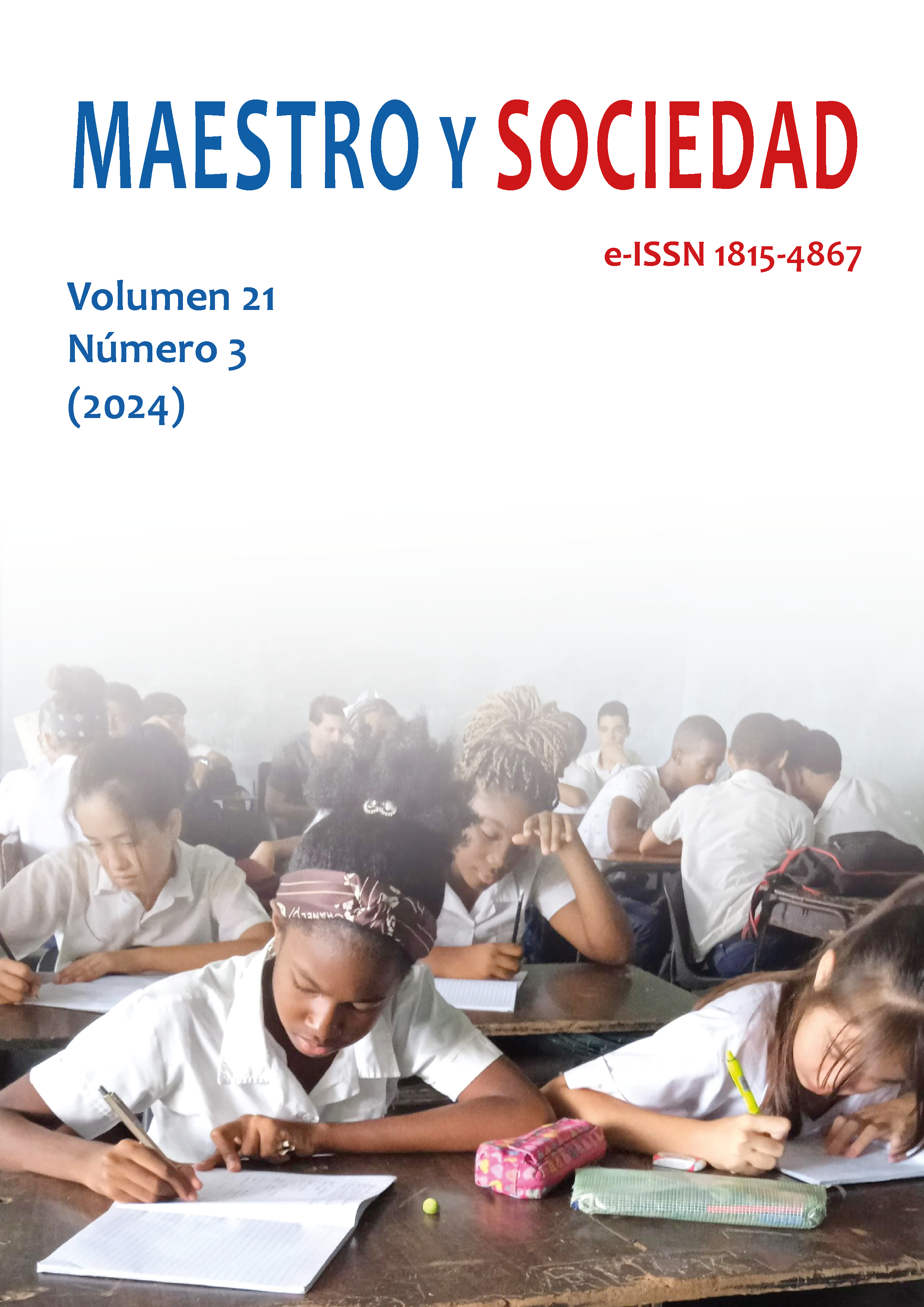Neurodidactic strategy for the care of schoolchildren with Attention Deficit Disorders (ADD)
Keywords:
Neurodidactics, attention deficit, pedagogical toolsAbstract
Introduction: There are different studies and research on attention deficit disorder (ADD), which is a neurobiological condition characterized by inattention, impulsiveness, excessive motor restlessness, affects the academic, emotional, and social process of the student; for this reason the objective of this research article was to describe the attention deficit of first grade students at the Clemencia Granda Romero school as a way of presenting a neurodidactic tool to improve the condition of the population under study. Materials and methods: In this sense, it is a quantitative objective; the scope is descriptive and applicative, the field design is non-experimental, the method was Inductive-Deductive, Analytical-Synthetic. The population under study is a total of 15 children and the sample is 4 first grade children and their teacher, the information collection techniques were interview and observation. Results: It was found that students have attention deficit since they have difficulty keeping up with tasks, lose their belongings, and have little interaction with their peers. The teacher stated that he was not trained to address these students and recognized the value of neurodidactic tools. Discussion: Given this reality, a proposal for a neurodidactic tool was presented to reduce attention deficit in first grade students based on play to improve some symptoms of the disorder, consisting of five activities, two of which are mediated by technology. Conclusions: It is concluded that neurodidactic tools that start from the identification of the population under study contribute significantly to the reduction of attention deficit in children.
References
Alliaud, A. (2018). Del tomársela con los jóvenes. Algunas reflexiones para abordar la formación de los docentes y la enseñanza en las escuelas de hoy. Espacios en blanco, Ser. Indagaciones, 28(1), 33-48.
Alonso, L. (2016). Métodos de investigación de enfoque experimental. Perú. Ciencias de Educación, http://www.postgradoune.edu.pe/pdf/documentos academicos/ciencias-de-la-educacion/10.pdf
Amortegui, S., Chávez, N., & Martin, D. (2018). La formación permanente de los docentes de la Educación Primaria Básica en la atención educativa a los escolares con necesidades educativas especiales, en el contexto colombiano. Revista Conrado, 14(65).
Borges, S., Leyva, M., Zurita, C., Demósthene, Y., Ortega, L., & Cobas, C. (2016). Pedagogía Especial e Inclusión educativa. Educación Cubana.
Gonzáles, L., & Huanca, E. (2020). La calidad del servicio y su relación con la satisfacción de los consumidores de restaurantes de pollos a la brasa de Mariano Melgar, 2018. Arequipa. [Tesis de licenciatura, Universidad Tecnológica del Perú].
Guevara, G., Verdesoto, A., & Castro, N. (2020). Metodologías de investigación educativa (descriptivas, experimentales, participativas, y de investigación-acción). RECIMUNDO, 4(3), 163-173. https://doi.org/10.26820/recimundo
Márquez, L., Useche, L., Alcavar, S., & Vaca, G. (2023). Calidad del servicio y satisfacción del cliente en restaurantes del terminal Portoviejo. Ingeniería Industrial; 44(1). http://scielo.sld.cu/scielo.php?script=sci_arttext&pid=S1815 59362023000100023
Martínez, C. (2018). Investigación, tipos y características. Lifeder.com
Monsalve-Robayo, A., & Mora-Caro, L. F. (2017). Estrategias de intervención dirigidas a niños con trastorno negativista desafiante, una revisión de la literatura. Revista Ciencias de la Salud, 15(1), 105-127.
Montenegro, G. (2021). Evaluación de la lealtad del cliente en el restaurante El Rincón del Pato, Chiclayo-2020. [Tesis de licenciatura, Universidad Católica Santo Toribio de Mogrovejo]. https://tesis.usat.edu.pe/bitstream/20.500.12423/4103/1/TL_MontenegroJu
Moreno, A. E., Rodríguez, J. V., & Rodríguez, I. R. (2018). La importancia de la emoción en el aprendizaje: Propuestas para mejorar la motivación de los estudiantes. Cuaderno de pedagogía universitaria, 15 29 , 3-11.
Narbona, J. & Crespo, N. (2005). Trastornos de memoria y atención en disfunciones cerebrales del niño. NEUROL, (40).
Osorio, L. A. (2017). Entre la teoría y la realidad: una revisión reflexiva sobre los procesos de intervención de niños con trastorno negativista desafiante. JSR Funjan Journal of Students' Research (histórico), (2), 107-116.
Parellada, M. (2009). TDAH. Trastorno por déficit de atención e hiperactividad. Alianza.
Saiz Fernández, L. C. (2018). Psicoestimulantes para el TDAH: análisis integral para una medicina basada en la prudencia. Revista de la Asociación Española de Neuropsiquiatría, 38(133), 301-330.
Sánchez, D. (2017). Perfil multicontextual de los niños con Trastorno por Déficit de Atención e Hiperactividad en sus competencias sociales. [Tesis Doctoral. Universidad de Jaume I].
Yépez, L. E., Gordillo, M. J., & Núñez, M. D. (2017). Aporte del pensamiento lateral al desarrollo de la inteligencia lingüística. Revista Publicando, 4(13 (1)), 269-281.
Published
How to Cite
Issue
Section
License
Copyright (c) 2024 Nelly Hodelin Amable, Mireya Stefanía Zúñiga Delgado

This work is licensed under a Creative Commons Attribution-NonCommercial-NoDerivatives 4.0 International License.
This journal provides immediate open access to its content, based on the principle that offering the public free access to research helps a greater global exchange of knowledge. Each author is responsible for the content of each of their articles.



























 Universidad de Oriente
Universidad de Oriente 